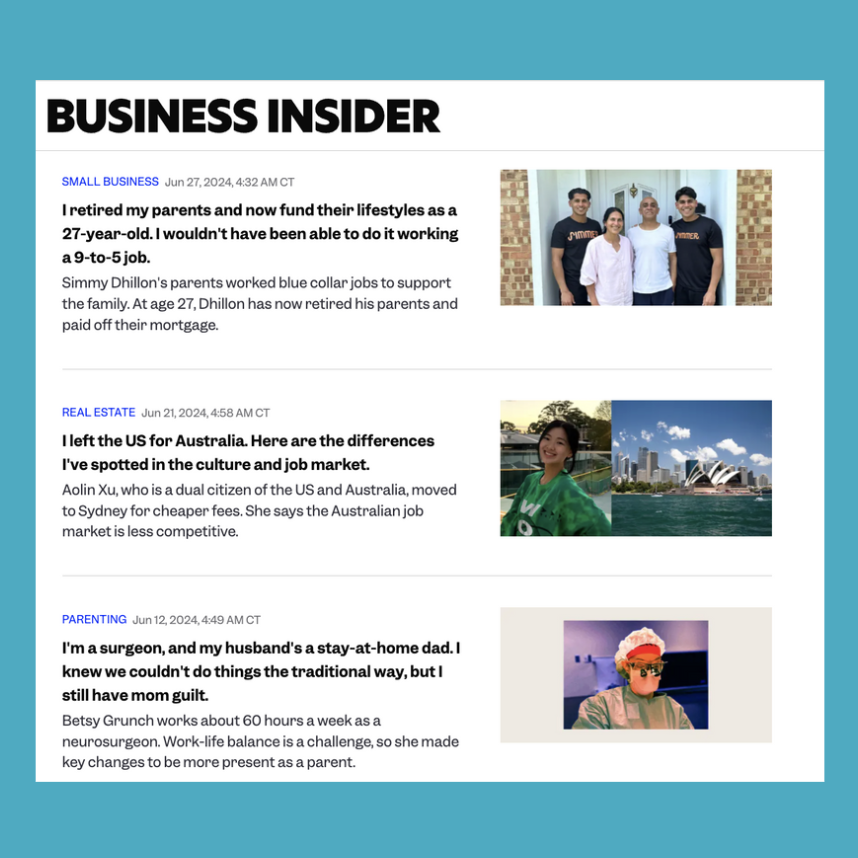We’re Sharing Our Most Compelling Pitch Email Subject Lines
TL;DR: How to Write Subject Lines That Secure Media Coverage
Think of your subject line as a “pre-email,” not a summary of your story. It should zero in on your angle.
Lead with value by thinking like a newsroom, not a product brochure. What will the reporter care about most?
Four of our go-to tactics and email subject line examples that earn coverage: clearly position your offer, lean into urgency, mock up a headline, and lead with humor.
I don’t know about you, but my email inbox immediately overwhelms me. I mean, look at this:
(And yes, that’s a real screenshot.)
Sure, those are un-opened newsletters, ads, and business reps that definitely don’t know my name or what I do here at Carve (apparently, I am the new CEO. Move over, David.)
But if this is what my email looks like, imagine what your target reporter’s inbox looks like. In a Muck Rack study of 1,000 journalists, 49% get at least six pitches per day — 12% confessed to 21 or more pitches a day. That’s 150 pitches per week, for those of you counting.
Despite those numbers, 83% of journalists still prefer to receive pitches via email.
Paired with the shrinkage of traditional newsrooms, the battle for attention in the inbox has only gotten more competitive. If you lose your recipient’s attention at the subject line, it doesn't matter if the rest of your pitch to journalists is 1000% perfect.
Now for some good news. The beautiful thing about email, in email marketer Jay Schwedelson’s words:
“There’s almost no other vehicle on Planet Earth where there’s an equal playing field… there’s an equal amount of real estate everyone gets with their subject lines.”
It doesn’t matter if you’re a nobody who has never pitched this journalist or podcast host or new client before; you have the same real estate in their inbox as everyone else.
PRO TIP: We agree with Jay, with one caveat: A reporter is more likely to open an email from a name they recognize than one they don’t. Building a relationship with a reporter will only help you stand out in a stacked email inbox. We’ve got tips for that here.
So how do you make the most of it? We asked the experts.
The Subject Line is Your “Pre Email”
Think of your pitch email subject line as your pre-email. That’s how pitching expert, Matt Burkey, views the subject line.
“Consider the subject line as your ‘pre-email.’ It’s the first thing a reporter will see, so keep it short and focused on your main angle.”
To do that, here are some of his tips:
The ideal length is 8-10 words.
No brand names unless it’s absolutely necessary for the story. Or if the brand itself is the story. But this is only true for household names.
Personalize it to each reporter’s beat, interests, and/or personality if you can.
Write your subject line twice. The second is always better.
PRO TIP: Matt is full of helpful tips about what it takes to secure coverage in modern media. He explored them all in a LinkedIn Live.
Your pitch email subject line needs to tell your story in a way that “hooks” the recipient of the email, and make the value of what you’re offering crystal-clear. Pause on that word. Value.
We all perceive it differently. But in my experience working with many brands, their perspective of value tends to be… insulated. I’ll let the gif explain it for me:
“Think like a newsroom, not a product brochure,” as Chris Stokel-Walker – a freelance journalist for Bloomberg, BBC News, The Times, The Economist – puts it. “What’s important to you isn’t actually important.”
Step number one is to give yourself a good reality check. Consider what’s valuable for the reporter, not yourself.
Which brings us to the next question… what is valuable to them?
Email Subject Line Examples
A Clearly Positioned Offer
Reporters don’t want to dig through run-on sentences and buzzwords to figure out what you bring to the table. Don’t make them; include it in your subject line.
“Clearly call out what you're offering in the subject line of your pitch to journalists,” said Ellie Sachs. “It could be an exclusive, a CEO or executive interview, a major acquisition, or a press event invite.”
Note that reporters vary in what they see as a “clear offer.” For example, this Rolling Stone VP loves to see these three words in his inbox: EXCLUSIVE, INVITE, and INTERVIEW.
A Sense of Urgency (See also: Timeliness)
Joni Sweet – a journalist who’s written for National Geographic, Thrillist, Forbes, Real Simple, Business Insider, and USA Today – sums this up in a single question.
“What makes [your pitch] compelling to my audience right now?”
Answering that question might give you the focus of your pitch email subject line. Here are some examples:
Jacking a trend – Your story is tied to breaking news or a cultural moment unfolding right now. Example: “What the TikTok ban means for advertisers in Q4”
Showing consequence or impact – Event A happens; consequence B follows. Maybe one of your executive voices can weigh in on why something matters for the journalist’s readers. Example: “CEO Interview: How manufacturers are preparing for new climate bill”
Tying to a seasonal event – Connecting to upcoming or current industry events (like CES or Toy Fair), or holidays that matter to a reporter’s readers in the moment. Example: “Holiday shipping crunch: Data shows retailers may not be ready”
Time sensitivity or limited access – Your opportunity has a short shelf life. For example, offering an exclusive with a deadline to either accept or turn down. Example: “Today only: exclusive interview with [brand] CEO on new acquisition”
“Tariffs have been the hot topic of the year,” said Hailey Pinto. “So I channeled urgency while offering expert commentary with the subject line: ‘I Can’t Stay Silent’: CEO Speaks Out on Hidden Toll of Tariffs on Small Biz.’ It offered a new angle on the tariff story for this reporter, who jumped on the opportunity to explore the topic further.”
A Mock Headline
Formatting your subject line like the headline of a reporter’s previous story tells them that you did your research and the angle is specifically for them. This also allows them to envision what your story might look like in their portfolio.
I secured an opportunity with Business Insider this way. These were the reporter’s recently published stories:
And here’s the email subject line example I pitched to her:
Guess what? The reporter responded to my pitch two hours later. Eventually, it became this placement for the CEO of a Martech brand.
PRO TIP: There’s another lesson in this subject line. Vulnerability is compelling. In our AI world, we’re all looking for some humanity.
A (Grounded) Sense of Humor
In a workshop with Carve Communications, journalist Nicole Pajer shared one of the weirdest email subject line examples she received: Uterus cereal in honor of celebrating your menstrual cycle.
It certainly caught her attention – a regular WTF?? moment – but it also earned an instant open, since she had written stories on female health before.
This tactic is tricky because your subject line can’t just be all fun and games. It also needs to be personalized to the reporter you’re pitching. Otherwise, you’re just playing into most reporters’ biggest pet peeve.
A Cision report found that 76% of reporters say the easiest way to get blocked is by spamming them with irrelevant pitches. Sixty-nine percent said understanding their target audience and what’s relevant to them makes their job easier.
“One of my craziest subject lines actually wasn’t related to the pitch inside, but it was personalized for the reporter,” said Marely Arias. “I found out one of my target reporters attended the University of Florida. I attended Florida State University, their biggest rival. So the subject line read, ‘Instructions for crying when FSU beats UF.’ Needless to say, I got a response.”
There’s a fine line between fun and annoying. It’s your job to find it before you send the email.
Standing out in an inbox today takes the same intention and care crafted into the pitch email subject line as the pitch itself. At the end of the day, a subject line is a reporter’s first impression of you, your story, and your brand. Make it count, and you might just be the one that breaks through the noise.







